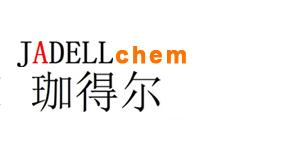Recombinant Human Angiopoietin-like Protein 8, N-Fc (HEK293-expressed) 是 LPL 的一种分泌抑制剂。Angiopoietin-like Protein 8可作为重要的代谢开关,与ANGPTL3或ANGPTL4形成复合物,引导甘油三酯在血液中的能量流动。
Synonyms
rHuAngiopoietin-like Protein 8, N-Fc; ANGPTL8; Betatrophin; C19orf81; Angiopoietin-like Protein 8 ; 重组人血管生成素样蛋白8
Species
HumanSource
HEK 293 Accession
Q6UXH0 Gene ID
55908 Molecular Weight
Approximately 54.0 kDa AA Sequence
APMGGPELAQ HEELTLLFHG TLQLGQALNG VYRTTEGRLT KARNSLGLYG RTIELLGQEV SRGRDAAQEL RASLLETQME EDILQLQAEA TAEVLGEVAQ AQKVLRDSVQ RLEVQLRSAW LGPAYREFEV LKAHADKQSH ILWALTGHVQ RQRREMVAQQ HRLRQIQERL HTAALPA Biological Activity
Data is not available. Appearance
Lyophilized powder. Formulation
Lyophilized after extensive dialysis against 20 mM PB, 150 mM NaCl, pH 7.4. Endotoxin Level
<1 EU/μg, determined by LAL method. Reconstitution
Reconstitute the lyophilized recombinant Human Angiopoietin-like Protein 8, N-Fc (HEK293-expressed) (rHuAngiopoietin-like Protein 8, N-Fc) to 100 µg/mL using ddH2O or diluted with PBS. Storage & Stability
Lyophilized recombinant Human Angiopoietin-like Protein 8, N-Fc (HEK293-expressed) (rHuAngiopoietin-like Protein 8, N-Fc) is stored at -20°C. After reconstitution, it is stable at 4°C for 1 week or -20°C for longer. It is recommended to freeze aliquots at -20°C or -80°C for extended storage. Shipping
Room temperature in continental US; may vary elsewhere. Background
Angiopoietin-like proteins (ANGPTLs) represent a family of eight secreted glycoproteins that show structural homology to angiopoietins and carry distinct physiological functions, including putative roles in lipid metabolism, expansion of stem cells, inflammation, tissue remodeling and angiogenesis. In recent years, three ANGPTLs, ANGPTL3, ANGPTL4 and ANGP-TL8, have been shown to play a role in lipid metabolism and in the regulation of plasma lipid levels. ANGPTL4 and ANGPTL8 form a complex when refolded together and that ANGPTL4 in that complex loses its ability to inactivate LPL. We have observed that the C-terminal helix of ANGPTL8 is important for complex formation with ANGPTL3 or ANGPTL4, rather than for covering the functional site of the protein, as was previously proposed. |



